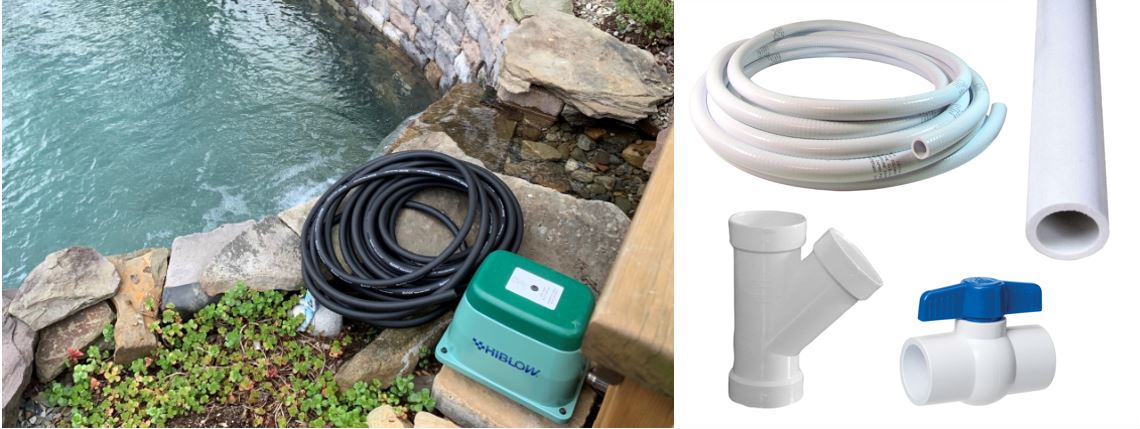June 16, 2020
What size and type of tubing should I use with my pond air pump?
Maximizing your aeration system: choosing tubing for your pond

Selecting an air pump for your pond is only a piece of creating a successful aeration system (reference https://www.hiblow-usa.com/2020/09/25/what-size-air-pump-should-i-use-to-aerate-my-pond/ ). Installing the right size ID tubing is essential to maximize air flow and minimize system pressure – which directly impacts the life of the aerator. The amount of air flow, length of the tubing from the pump to the diffuser(s), and water depth all play a key role when selecting tubing.
Standard tubing options:
Most pond aeration packages consist of an air pump, diffuser(s), and weighted tubing. Utilizing weighted tubing is typically less time consuming when setting up a system but can be expensive – especially when running longer distances. Alternative options include poly tubing or PVC pipe. Poly tubing is cost-effective and has flexibility in the line when digging out trenches on land and maneuvering the diffuser(s) in the water. You do want to ensure that you use a poly tubing with reinforced walls, as any kinking or pinching of the tubing can cause a restriction and extra backpressure in the system. Poly tubing requires bricks or even concrete blocks to hold the tubing down, so it does not float to the surface. PVC pipe is typically the most cost-effective option, but also must be held down to avoid floating to the surface. It does not offer much flexibility when maneuvering the diffuser(s) in the pond. To save money and still utilize weighted tubing, some homeowners run poly tubing or PVC pipe from the pump to the water’s edge, then connect the weighted tubing which runs to the diffuser(s).
Tubing inside diameter (ID):
Perhaps the most critical consideration when choosing tubing is the ID. The most common – and most cost efficient – weighted tubing on the market is 3/8”. While this is typically a good choice when running shorter distances up to 50’, it is not ideal beyond 50’ because longer distances can create more friction loss (added pressure) and therefore less air flow. Another consideration is the size of the air pump. As the pump size increases and the air flow increases, larger ID tube is necessary to minimize the friction loss. As a rule of thumb, HIBLOW USA recommends ½” tubing from 50’-100’ and ¾” tubing beyond that.
Running tubing to multiple diffusers:
If you are connecting more than 1 diffuser to your system, HIBLOW recommends a “Y” (45-degree angle) split rather than a “T” (90-degree). This simple change will reduce the friction loss. If the diffusers are at different depths, it is best to install ball valves to even out the system pressure so that each diffuser gets the same amount of air.
For additional information and guidance when setting up your system, please check out the following link: https://www.hiblow-usa.com/2020/02/24/how-water-depth-pipe-size-and-diffuser-type-affect-pond-aeration-and-system-longevity/
For further consultation or to find a distributor in your area, please give us a call at 734-944-5032, or send us an email at info@hiblow-usa.com
Author: Mike Miner
Is there a system whereby I can pump air 2,000 feet to aerate my Trout Pond ?
What do you recommend:
1. Pump: Type, size, liter per minute, PSI output, amperage at 230 volt
2. Tubing: Type, inside dia
Thanks
Doug Holmberg
612-919-4000
dougppm@gmail.com
St. Paul, MN
Hi Doug- I’m very sorry for the late reply. Your message was lost in spam. In order to make a recommendation, I’d need to know the size of your pond, shape, number of diffusers you think you need, and the depth.